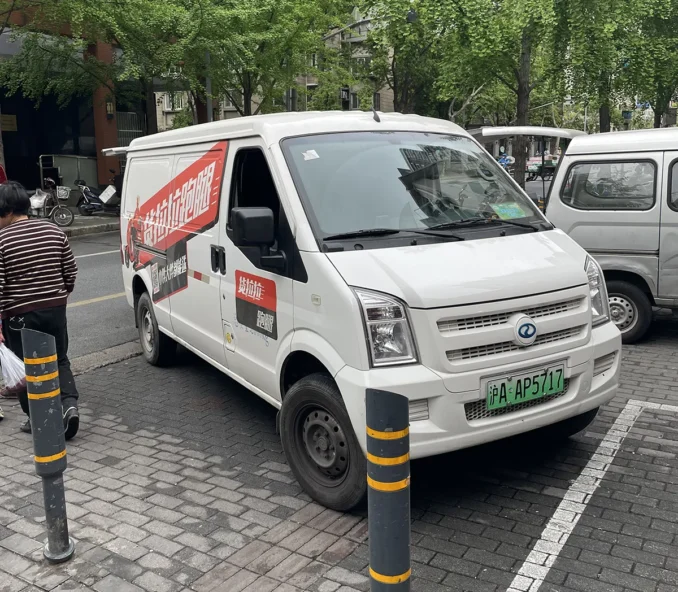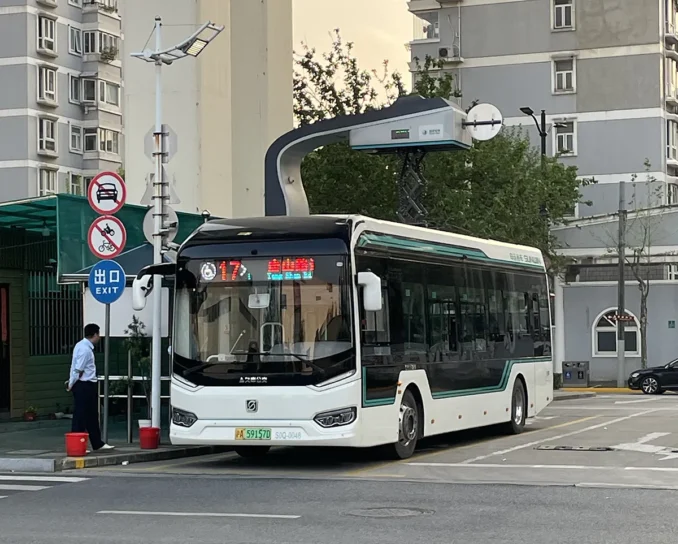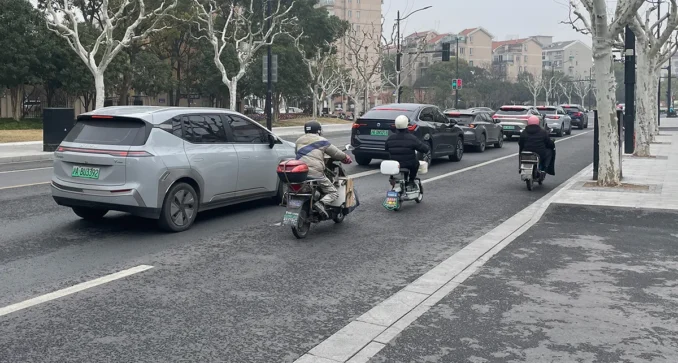Article by Damian Holmes, Editor of World Landscape Architecture

Over the past fifteen years, there has been a concerted effort by the Shanghai and Chinese National governments to improve air quality by encouraging the purchase of electric vehicles, including public transport vehicles. Recently, this included the implementation of electric (lead batteries) and hybrid buses in the lead up to the 2010 World Expo. Shanghai has run electric trolley buses for over 100 years, but electric buses (lead and lithium batteries) have increased over the years. The recent government target announced is to replace the current whole fleet with 6,200 NEV (battery) buses by 2027. The government also committed to replacing all taxis with NEVS by 2027 [1]. From on-the-ground experience in Shanghai, this should be easily achieved as it is rare to see a petrol (ICE) taxi in Shanghai.
For passenger cars, there has been an increase in sales of passenger electric vehicles due to government incentives to purchase electric (BEV) or hybrid (HEV) vehicles, as well as the implementation of stricter emissions standards (Euro 6). The government has also implemented restrictions (times and areas) for older Euro 4 cars. Shanghai has a two-tiered vehicle registration system; green plates are free (until the end of 2025), whereas blue plates for petrol vehicles are purchased at auction (with 2025 prices of over $ 12,000 USD). These initiatives have increased electric vehicle sales, including passenger vehicles (private, government and ride-sharing) and delivery vehicles.


The majority of deliveries in Shanghai are made by electric scooters. LPG and petrol scooters were banned in 2014, and owners were unable to register or fuel up after 2018. Electric scooters are cheap, efficient, and easy to charge, and many housing compounds have charging areas, and some scooter companies offer battery swap stations.
The outcome of all these changes has changed the sound and smells of Shanghai streets. The sound is quieter, and the smell has dramatically improved. When you arrive in Shanghai at the airport or train station, the smell of sulphur and petrol fumes is no longer present. When travelling to the city by car, you still see some petrol cars (blue plates) and trucks (delivery and construction), but ever increasingly you rarely see them within the restricted area within the outer ring road.
When walking around the city, you become very aware of the lack of engine sounds and the smell of fumes. Whether walking along on an eight-lane road or a one-way street, it becomes a different experience. This is not to say that the sounds of streets are tranquil, as you can still hear the sound of tyres, the sci-fi low-speed warning sound of electric vehicles and the whizzing of electric scooters.
Shanghai has also increased the area of autonomous vehicle testing to 758 kilometres of roads, allowing vehicles and road signage to be tested and accelerating the possibility of autonomous vehicles in the entire city. [2]

Reduced sound and air pollution create opportunities for change in policy and standards for landscape architects, designers, and governments. Do we need to select trees that tolerate air pollution? Do we need mechanical ventilation for a new underground residential or transport car park? Where do we put charging infrastructure? Can we implement separate bike lanes along freeways due to reduced air pollution? Can we widen pedestrian areas due to autonomous vehicles requiring less lane width? Do we need sound walls or berms to reduce vehicle noise?

It is understood that the best transport solution for cities is to increase public transport ridership and provide greater opportunities for alternative transport. However, vehicles will always be part of the cities for transport, deliveries, and there are many lessons for cities to learn from Shanghai and other cities in China, Norway, Iceland, Sweden, etc.

The changes in Shanghai streets that I have experienced over the last 20 years, but more so in recent years has changed my perception of what can be achieved. And I feel that the best way to understand the impact of quieter streets in a dense city is to experience them firsthand, as this opens up ideas and opportunities for the cities and designers.
[1] Shanghai plans to convert all buses, cabs to green NEVs by 2027 – Global Times
https://www.globaltimes.cn/page/202408/1317633.shtml
[2] Shanghai expands autonomous driving testing zones in Pudong – Shanghai Government – https://english.shanghai.gov.cn/en-Latest-WhatsNew/20250328/360a8d20ec5e449b8a7d5a5024999337.htm
Article by Damian Holmes, Editor of World Landscape Architecture. He lived in Shanghai from 2005-2016 and visits Shanghai regularly.
Images and Videos: © Damian Holmes

Be the first to comment